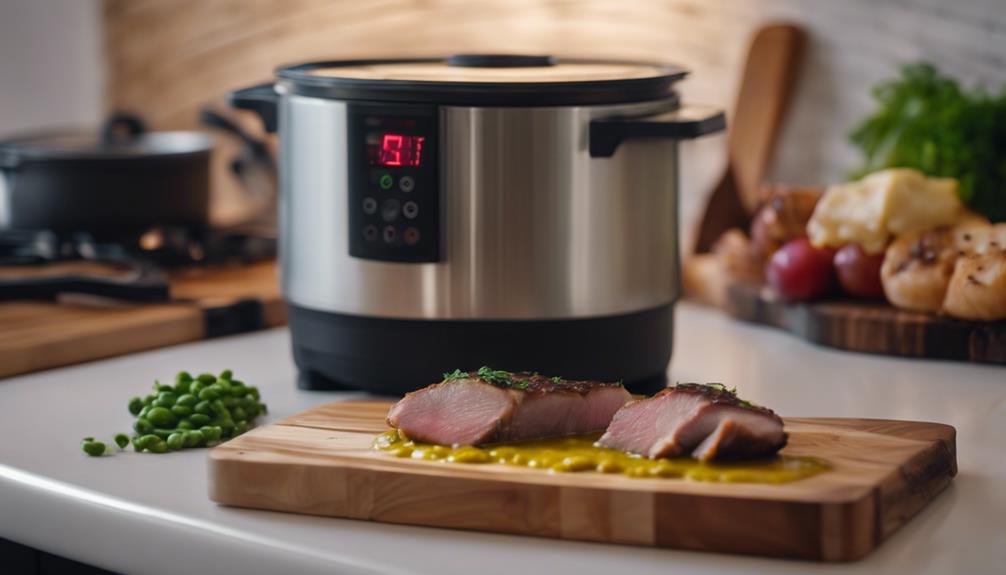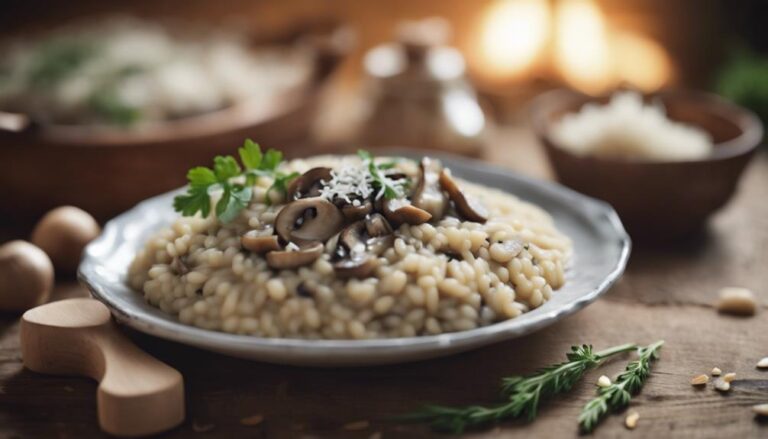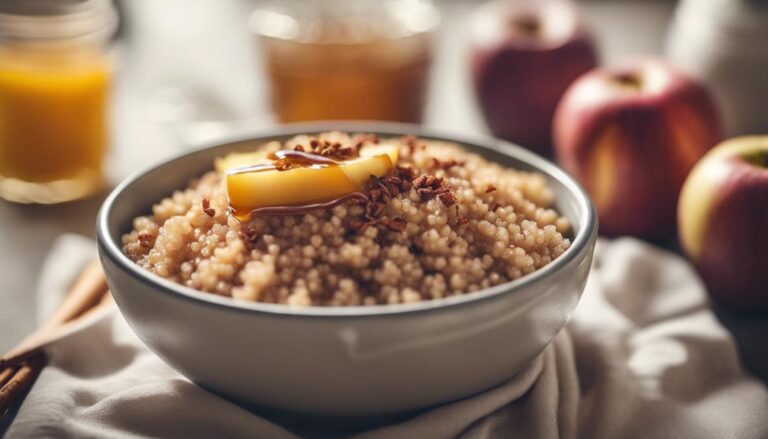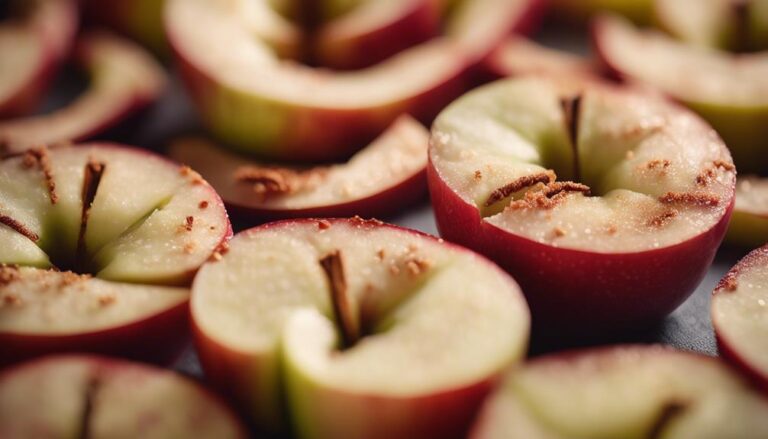Sous Vide Split Pea Soup With Smoked Pork
To master Sous Vide Split Pea Soup with Smoked Pork, set the temperature precisely at 180°F for flavor perfection. The sous vide technique guarantees exact cooking, preserving taste integrity. The pork's smoky notes intertwine with earthy split peas, creating a rich, velvety base. Succulent smoked pork adds tenderness, complementing the creamy consistency. This culinary harmony delivers a gratifying dining experience. Elevate your split pea soup game by savoring the intricate balance of flavors and textures. Uncover the secrets to a truly delectable dish by exploring the art of sous vide cooking for this hearty delight.
What You Will Learn Here
- Sous vide method ensures precise cooking at 180°F for consistent flavor infusion.
- Gentle sous vide cooking maintains peak flavor without overcooking smoked pork.
- Attention to detail in sous vide process enhances split pea soup's taste.
- Smoked pork adds succulence and depth to the velvety soup base.
- Harmony of earthy split peas and savory smoked pork creates a satisfying meal.
Pea Soup Origins in Netherlands
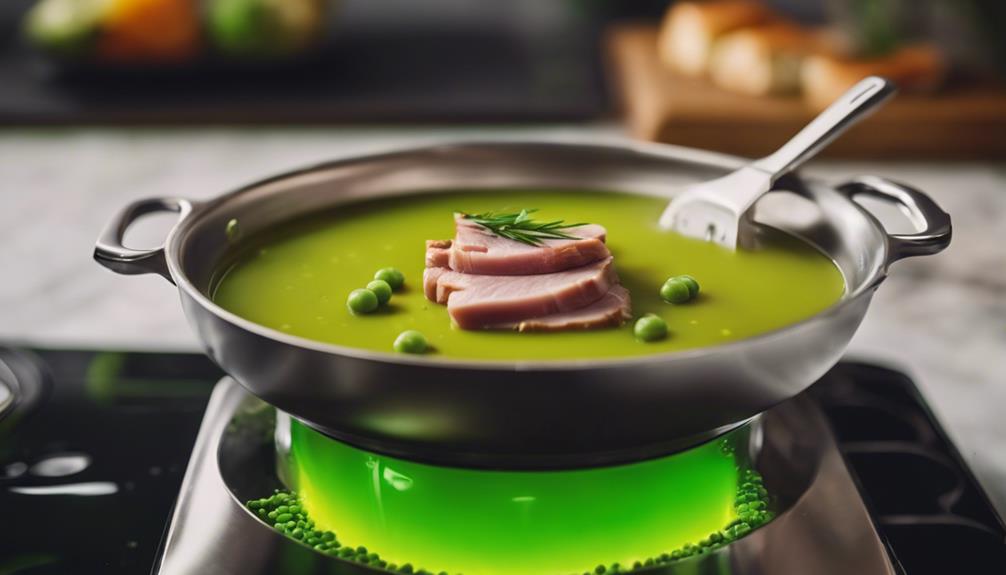
Discover the rich history of Dutch pea soup, Erwtensoep, a beloved traditional dish in the Netherlands.
This thick and hearty soup, often featuring smoked pork, has deep cultural significance in Dutch cuisine, especially during the winter months.
The inclusion of smoked pork products like ham hock or bacon adds a distinctive flavor to this iconic comfort food.
Dutch Pea Soup History
Have you ever wondered about the intriguing origins of Dutch Pea Soup, known as 'Erwtensoep'?
Split Pea Soup, also called Dutch Pea Soup, has deep roots in the Netherlands. This hearty dish is a beloved part of Dutch culture, especially during the cold winter months.
The traditional recipe includes green split peas, a variety of vegetables, and smoked pork such as ham hock or pork ribs to impart a rich flavor. Additionally, rookworst, a smoked sausage, is often added to enhance the overall taste and texture of the soup.
Different regions in the Netherlands may have their own variations of Erwtensoep, incorporating diverse meats, vegetables, and seasonings according to local preferences.
Traditional Dutch Recipe
The traditional Dutch recipe for pea soup, known as Erwtensoep, embodies centuries-old culinary heritage with its hearty blend of split peas, vegetables, and smoked meats. When preparing this comforting dish, the key ingredients like split peas, ham hock, and smoked meats come together to create a flavorful and satisfying soup. The ham hock, with its rich and smoky essence, infuses the soup with a depth of flavor that is truly distinctive. Below is a table outlining the essential components of the traditional Dutch erwtensoep recipe:
| Ingredient | Description |
|---|---|
| Split Peas | Dried green peas that break down during cooking, giving the soup its thick texture. |
| Ham Hock | Smoked pork knuckle or joint, adding a savory and smoky flavor to the soup. |
| Smoked Meats | Various smoked meats like bacon or sausage are used to enhance the overall taste of the soup. |
Cultural Significance in Netherlands
With roots deeply embedded in Dutch culinary history, the origins of pea soup in the Netherlands trace back to a time when hearty, warming dishes were essential for sustenance in the cold winter months. Erwtensoep, commonly known as Dutch pea soup, holds cultural significance as a beloved traditional dish. This thick, stew-like soup is made with green split peas and often includes smoked pork, like ham hock, for added flavor.
Its preparation in large batches signifies communal gatherings and cozy Dutch comfort food traditions. When served hot alongside rye bread and bacon, erwtensoep not only warms the body but also warms the soul, making it a cherished part of Dutch cuisine during the colder seasons.
Split Peas and Pork Belly
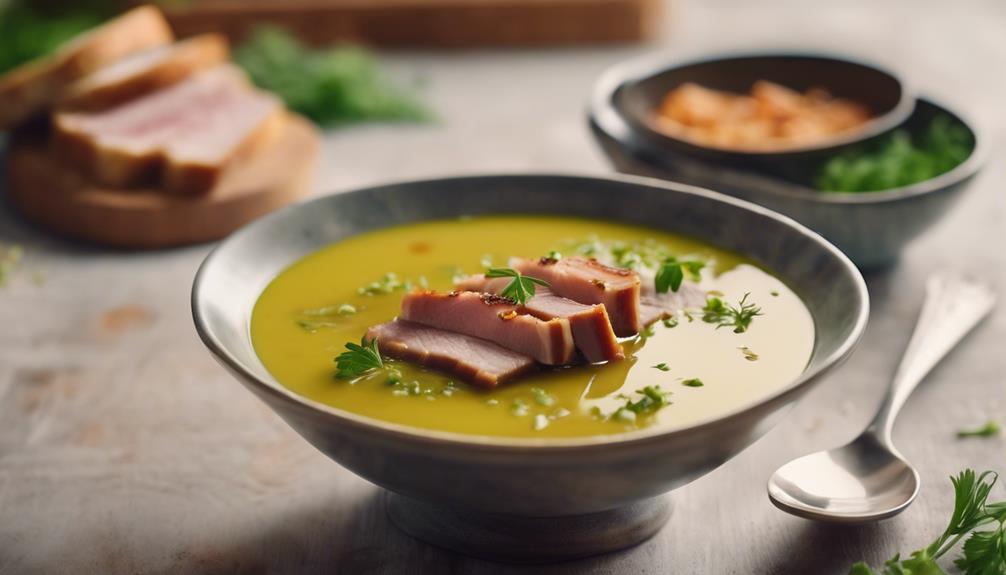
When preparing split peas and pork belly for sous vide cooking, consider selecting a well-marbled piece of pork belly to enhance the richness of the soup. The combination of split peas and pork belly creates a symphony of flavors that meld together beautifully during the sous vide process.
- Fat Content: The high-fat content in pork belly helps infuse the soup with a luscious richness that complements the earthy flavor of split peas.
- Texture: The tender texture of the pork belly contrasts wonderfully with the creamy consistency of the split peas, creating a delightful mouthfeel.
- Flavor Infusion: As the pork belly cooks sous vide with the split peas, its flavors permeate the soup, adding depth and complexity to every spoonful.
Selecting quality ingredients and paying attention to the details of the sous vide process will elevate your split pea soup with pork belly to a whole new level of culinary delight.
Hearty Dutch Pea Soup Variations
When exploring hearty Dutch pea soup variations, you'll find intriguing twists like a sous vide pea soup variation, the addition of smoked sausage for extra depth of flavor, and the incorporation of pork shank and bacon to enhance the overall taste profile.
These variations bring a unique and savory touch to the traditional Dutch erwtensoep, making it a comforting and satisfying meal during the colder months. Experimenting with different meat combinations can elevate the richness and complexity of this beloved winter dish.
Sous Vide Pea Soup Variation
For an added depth of flavor and heartiness to your pea soup, consider incorporating traditional Dutch ingredients like ham hock and pork ribs in the sous vide cooking process. These ingredients will infuse your soup with rich, savory notes that are characteristic of Dutch pea soups.
Here are some variations to enhance your sous vide pea soup:
- Ham Hock: Adds a smoky and meaty flavor that complements the earthy split peas.
- Pork Ribs: Provide a tender texture and additional depth of taste to the soup broth.
- Root Vegetables: Carrots, celeriac, and leeks can be added for extra layers of flavor and nutrients.
Smoked Sausage Addition
To elevate the heartiness of your Dutch pea soup, consider incorporating flavorful smoked sausage into the mix. The addition of smoked sausage enhances the split pea soup with a delightful smoky and savory flavor that complements the earthy taste of the peas. Here are three ways to make the most of this hearty Dutch pea soup variation:
- Sliced smoked sausage adds a meaty texture to the soup, making each spoonful a satisfying experience.
- Using smoked ham hock along with the sausage introduces another layer of rich, smoky flavor to the dish.
- Experiment with different types of smoked sausage to vary the spiciness and complexity of your split pea soup, catering to your flavor preferences.
Pork Shank and Bacon Flavor
Enhancing the robust essence of Dutch pea soup, the infusion of pork shank and bacon offers a harmonious blend of rich, smoky flavors that elevate this hearty dish to a whole new level.
The Split Pea Soup becomes a sensory delight with the addition of Smoked Ham hock and bacon, providing a depth of flavor that lingers on your palate.
The Ham Hock imparts a meaty texture, while the bacon infuses a savory richness, creating a symphony of tastes in every spoonful.
This dynamic duo of pork elements not only adds complexity to the soup but also brings a nostalgic comfort to those enjoying this traditional Dutch dish.
Sous Vide Temperature Recommendation
When preparing split pea soup in a sous vide, hitting the recommended temperature of 180°F (82°C) is crucial. This precision cooking technique guarantees the peas and smoked pork reach perfect tenderness.
Optimal Temperature Settings
For best results in cooking sous vide split pea soup, set the temperature to 180ºF (82ºC) to guarantee the perfect softness and flavor development of the split peas.
Cooking the split pea soup at this essential temperature allows the peas to soften gradually while enhancing the infusion of flavors.
Maintaining a consistent temperature of 180ºF (82ºC) throughout the cooking process is vital for achieving a velvety texture and rich taste in your soup.
This setting ensures that the split peas break down just enough to create a luscious consistency without becoming mushy.
Precision Cooking Technique
To achieve precise cooking results when preparing sous vide split pea soup, maintaining a consistent temperature setting of 180ºF (82ºC) is crucial for optimal flavor development and texture. Cooking split peas, ham hocks, and chicken broth at this temperature guarantees that the ingredients reach the perfect level of tenderness and flavor infusion.
The controlled sous vide technique maintains a steady environment throughout the cooking process, allowing the split peas to soften gradually while absorbing the rich flavors of the ham hocks and chicken broth. This precision cooking method ensures that each spoonful of your Split Pea Soup with Smoked Pork is deliciously consistent and perfectly cooked, providing a comforting and flavorful dining experience.
Consistent Flavor Infusion
Achieving consistent flavor infusion in your sous vide split pea soup with smoked pork relies heavily on maintaining the recommended temperature of 180°F (82°C) throughout the cooking process. This precise temperature is essential for ensuring that the flavors from the smoked pork are evenly distributed, resulting in a rich and well-balanced soup.
By utilizing the sous vide method, you allow for gentle and accurate cooking, which enhances the overall taste and texture of the dish. The constant temperature throughout the cooking process guarantees that the soup reaches its peak flavor profile without the risk of overcooking, preserving the tenderness of the smoked pork and intensifying the depth of flavors.
Embracing this meticulous approach to flavor infusion will elevate your split pea soup with smoked pork to a whole new level of culinary excellence.
Final Thoughts
In wrapping up this culinary journey through sous vide split pea soup with smoked pork, let's reflect on the harmonious blend of flavors and textures that make this dish a standout comfort classic. The marriage of the earthy split peas with the savory smoked pork creates a depth of flavor that is both comforting and rich. The tenderness of the smoked pork, whether it's a ham hock or another cut, adds a succulent element to the velvety soup base. The smokiness from the pork permeates the dish, offering a delightful contrast to the creamy consistency of the split pea soup.
| Aspect | Description |
|---|---|
| Flavor | The smokiness of the pork enhances the earthiness of the split peas. |
| Texture | The tender smoked pork complements the creamy texture of the soup. |
| Comfort Factor | This dish is the epitome of comfort food, warming you from the inside out. |
| Overall Satisfaction | The combination of flavors and textures creates a satisfying and memorable meal. |
Frequently Asked Questions
What Do You Serve With Split Pea Soup?
When serving split pea soup, pair it with crusty bread for a satisfying combo. Add a side salad or roasted veggies for variety. Try a glass of white wine or a hot cup of tea to complement the flavors.
Why Is Split Pea Soup so Thick?
When split pea soup cooks, the peas soften and release starch, naturally thickening the soup. Ingredients like potatoes and carrots break down, adding to the thickness. Pureeing part of the soup and using ham hocks also contribute to its hearty texture.
Will Old Split Peas Ever Soften?
Old split peas can soften, especially with proper care. Consider split pea varieties, adjust cooking techniques like soaking or using a pressure cooker, and cater to your texture preferences. With patience and techniques, they will soften.
How Long Do You Sous Vide Raw Ham?
When you sous vide raw ham, aim for 6-8 hours for moist, flavorful results. The precise temperatures in sous vide techniques guarantee even cooking, leading to tender ham. Pairing it with complementary flavors can elevate your dish.
Conclusion
Indulge in the rich and comforting flavors of sous vide split pea soup with smoked pork. The tender split peas, savory pork belly, and aromatic herbs combine perfectly for a hearty and satisfying meal.
The sous vide method guarantees that every bite is infused with deep, complex flavors, making this Dutch classic a standout dish for any occasion.
Treat yourself to a bowl of this delicious soup and experience a taste of culinary perfection.
